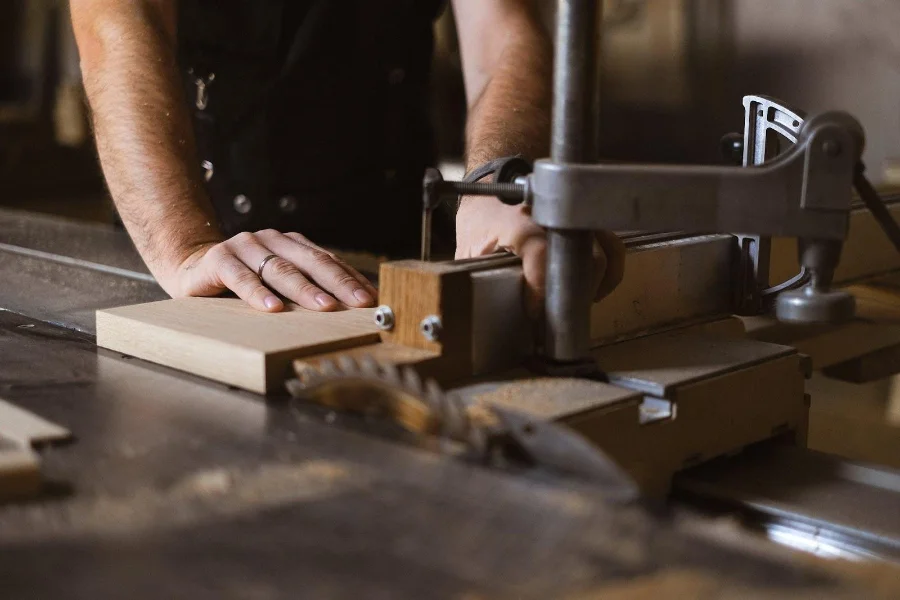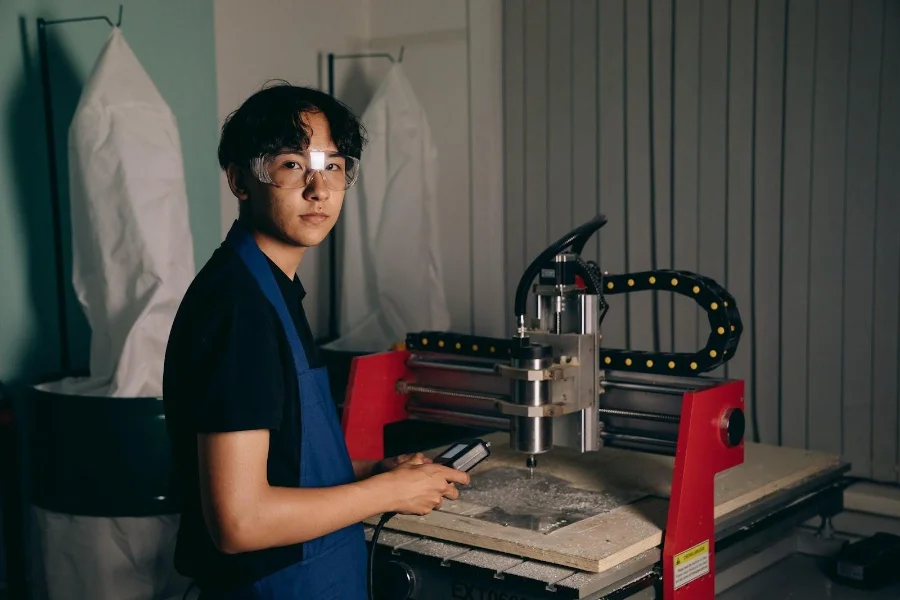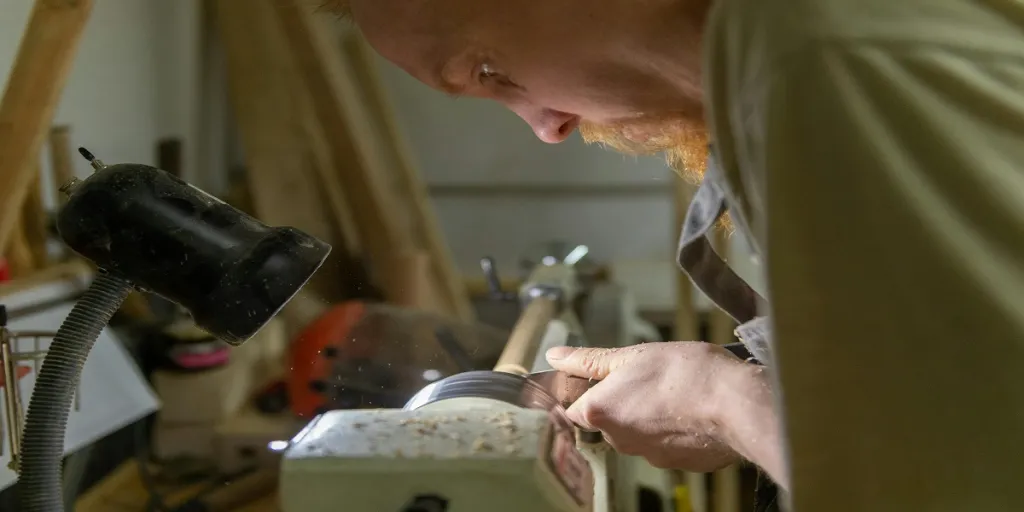A woodworker’s tools are just as essential as the wood itself. From excellent manufacturing facilities to the bustling workshops in the region, a wave of innovation has swept across Southeast Asia, revolutionizing the act of woodworking and bringing along the demand for the best quality machines to sustain its elevation.
This article explores six of these woodworking machinery trends. Also, you’ll see an overview of the market–highlighting each unique piece of equipment, its contribution to elevating woodworking, and manufacturing practices in the region.
Table of Contents
An overview of the woodworking machinery market
Special requirements for machinery in Southeast Asia
Six popular woodworking machines in Southeast Asia
Wrapping up
An overview of the woodworking machinery market
Statistics
According to research, the global woodwork machinery market was valued at US$ 4.53 billion in 2020 and it should increase to US$ 6.05 billion in 2028 at a compound annual growth rate (CAGR) of 3.9% during the forecast period of 2021 to 2028.
Woodworking machinery transforms raw wood components into products like beams, boards, and plywood for other structural uses like furniture and shipbuilding. CNC machines, robotics, and 3D machines are significant trends in the market as these machines make the production of complex designs easier and faster, revolutionizing the industry.
Market driver
The key market driver is the growing demand for wooden furniture and the need for automated and precise manufacturing processes. This increased demand is fueled by increasing net income and changing consumers’ lifestyles.
Also, there is a rising popularity of prefabricated wooden houses like bungalows, story houses, and garages in top countries such as the U.S., France, Italy, the U.K., Finland, Austria, and Germany. This is because timber material helps in reducing the emission of Co2, thus providing a power-efficient building material. Manufacturers in these countries emphasize using cross-laminated timber to build these houses, boosting the market growth.
Drawbacks
Unfortunately, safety concerns regarding woodworking machinery threaten market growth as health hazards caused by wood dust, toxic finishes, noise, and exposure to unguarded machinery may negatively affect workers.
However, developing countries like India are experiencing economic development across the construction sector, and this is expected to expand the woodworking machinery market worldwide in the coming years.
Type
The market is classified under lathe, saw, planer, and others. The lathe segment will dominate during the forecast period thanks to advanced CNC lathe machines. In contrast, the planer segment is anticipated to witness the highest compound annual growth rate due to the rising adoption of lightweight and high-efficient planer machines.
Applications
The market is segmented into three applications: construction, furniture, and others, with furniture expected to have the largest market share during the forecast period. Nevertheless, the construction segment will showcase exponential growth with the increasing disposable income across developing countries like India.
Region
Asia Pacific is expected to have the highest CAGR from 2021 to 2028 among other regions. It can be attributed to the growing population rate, influencing the demand and consumption of forest products. Further, China is among the world’s top woodworking machinery production countries, and other Asian and Southeast countries, such as India, are making policies to boost the market for small and mid-sized companies in the industry.
Special requirements for machinery in Southeast Asia

Woodworking machinery requirements can vary depending on specific countries within the region. However, some general factors to consider include:
- Voltage and Power supply: Southeast Asian countries operate on 220 – 240v, 50Hz electrical systems. Machinery should be checked for compatibility with local power supplies before purchase.
- Safety & Compliance: Machines should meet relevant health and safety standards to protect the well-being of workers.
- Climate: The region is known for its high temperature and humidity. Thus, woodworking equipment must be designed to withstand the working conditions.
- Servicing & Maintenance: Manufacturers should check the availability of spare parts and authorized service centers for the machinery to reduce downtimes and ensure prompt support.
- Documentation: It’s crucial to ensure that user manuals and machine operating instructions & documentation are in the local or official language to facilitate maintenance, troubleshooting, and training.
Six popular woodworking machines in Southeast Asia
7-head profile molder
Every detailed woodwork requires one of these versatile pieces of equipment for carving intricate profiles into wooden pieces.
The machine consists of multiple cutter heads arranged in a sequence, with each head performing a specific operation, such as shaping, grooving, or chamfering, until the desired profile is achieved.
Its ability to produce high-quality and consistent contours enables artisans to achieve decorative or architectural elements with great precision, thus enhancing the aesthetic appeal of their products.
Dust extractor

A dust extractor or filtration system is designed to remove wood dust and debris generated during manufacturing operations. This equipment features a powerful suction mechanism, filter, and collection system critical for maintaining a clean and healthy working environment.
Dust collectors are undoubtedly the most essential equipment in any industrial-sized timber workshop. Their ability to capture and contain airborne particles helps to prevent respiratory issues.
Also, without this machine, steel and flint from other devices may get out of hand, and the entire workspace may end up in flames. In other words, the dust extractor decreases the risk of fire hazards as it aligns with the recent emphasis on workshop safety and environmental regulations.
Hydraulic presses
These robust machines use hydraulic power from fluid pressure to generate the immense force needed in various woodworking applications such as laminating, pressing, shaping, or bending wood. Manufacturers can clamp sections of up to 4m long and 1.2m wide and laminate beams together for tabletops and worktops using PU or external adhesives.
Hydraulic presses offer precise control over pressure, allowing for consistent results in various operations. Their efficiency in handling heavy-duty tasks makes them essential in every workshop. They are usually employed in making furniture components, doors, plywood, veneers, etc.
Sawmills

Sawmills are large-scale woodworking machines used to process logs into lumber. They are made up of powerful saw blades that can cut through logs to create different board sizes.
They play a crucial role in the initial stage of wood production and often comprise advanced automated systems to enhance production and reduce waste.
In Southeast Asia, where forestry is a significant industry, modern sawmills enable sustainable and efficient timber extraction, reducing environmental impact and maximizing resource utilization.
Multi-rip saw

A combination of length and width cutting, typically called “ripping,” makes up the first solid wood processing stage. Cutting to the appropriate size is crucial, as any little defect can affect the rest of the production process. Hence, such a meticulous and fragile process can only be achieved with remarkable machinery like the multi-rip saw.
A multi-rip saw is designed to cut boards or planks into multiple pieces simultaneously. It is made up of numerous parallel blades on an automated saw which allows the size of the cut to be changed at intervals without having to turn off the machine.
Due to their speed and efficiency, this machine is ideal for ripping large volumes of lumber in a limited time. It is widely used in manufacturing furniture, construction, and other industries requiring precise and high-speed cutting.
CNC machine

Computer Numerical Control (CNC) machines allow manufacturers to send complex designs directly to the device, where an automated cutting tool attached to it follows the designs’ blueprints. This machine is used for carving, routing, milling, and shaping wood according to these programmed designs.
The cutting tool can move along linear X, Y, and Z axes and rotate A and B axes in five directions. This great freedom of movement permits precision to the nearest millimeter, allowing timber to be shaped as intricately as possible. In short, it allows manufacturers to customize wooden components with high accuracy, repeatability, and efficiency.
These machines have witnessed increased adoption in Southeast Asia due to the growing demand for customized wood products with reduced human error and increased efficiency.
Wrapping up
Southeast Asia’s remarkable woodworking machinery trends present incredible opportunities for businesses in the industry. By embracing automation and investing in advanced technologies, companies can quickly adapt to market demands and enhance their skills, as this will help them stay competitive, which will, in turn, position them for success in the evolving industry.
After all, the woodworking machinery trends in Southeast Asia revolve around precision, safety, efficiency, and sustainability, and these six machine trends offer just that.




